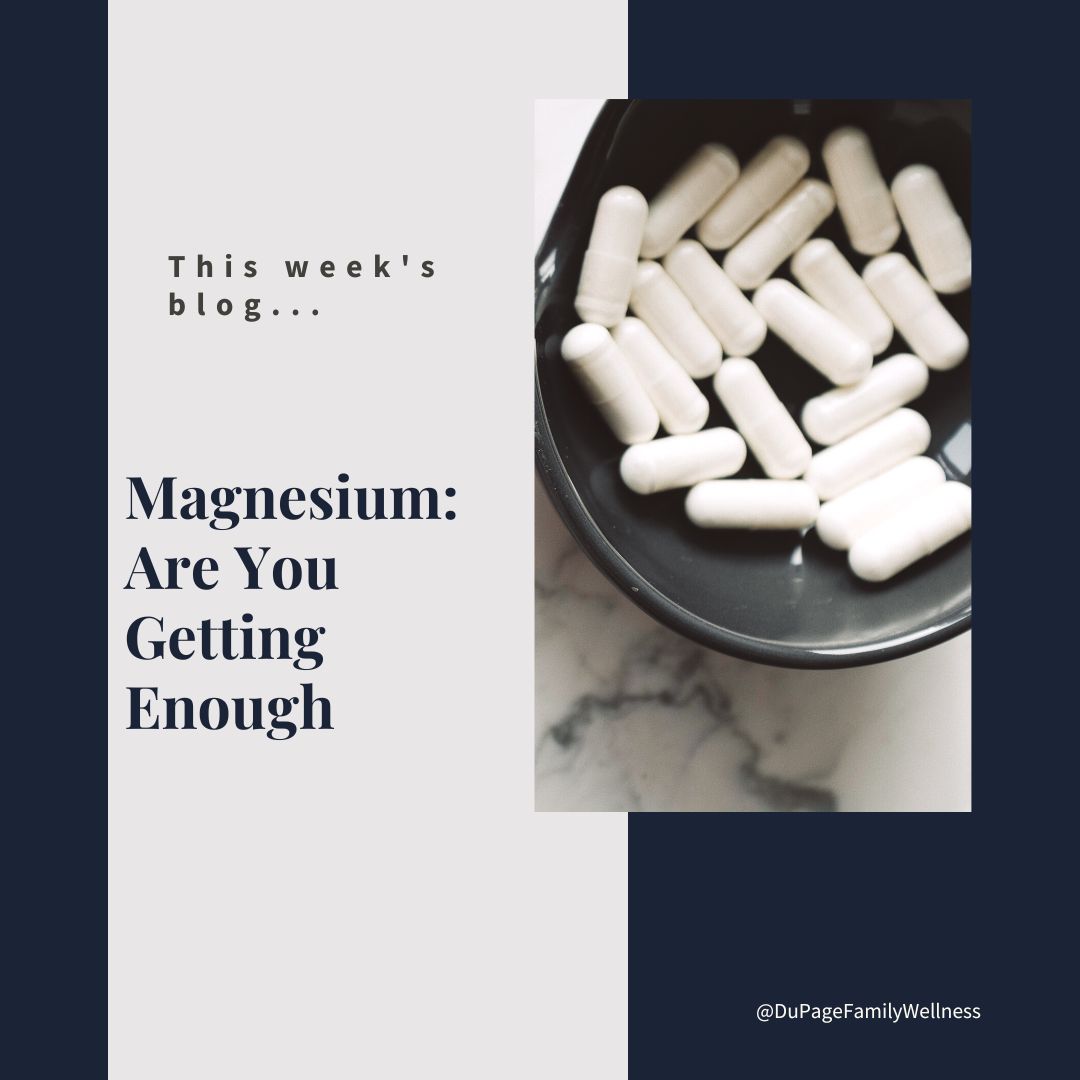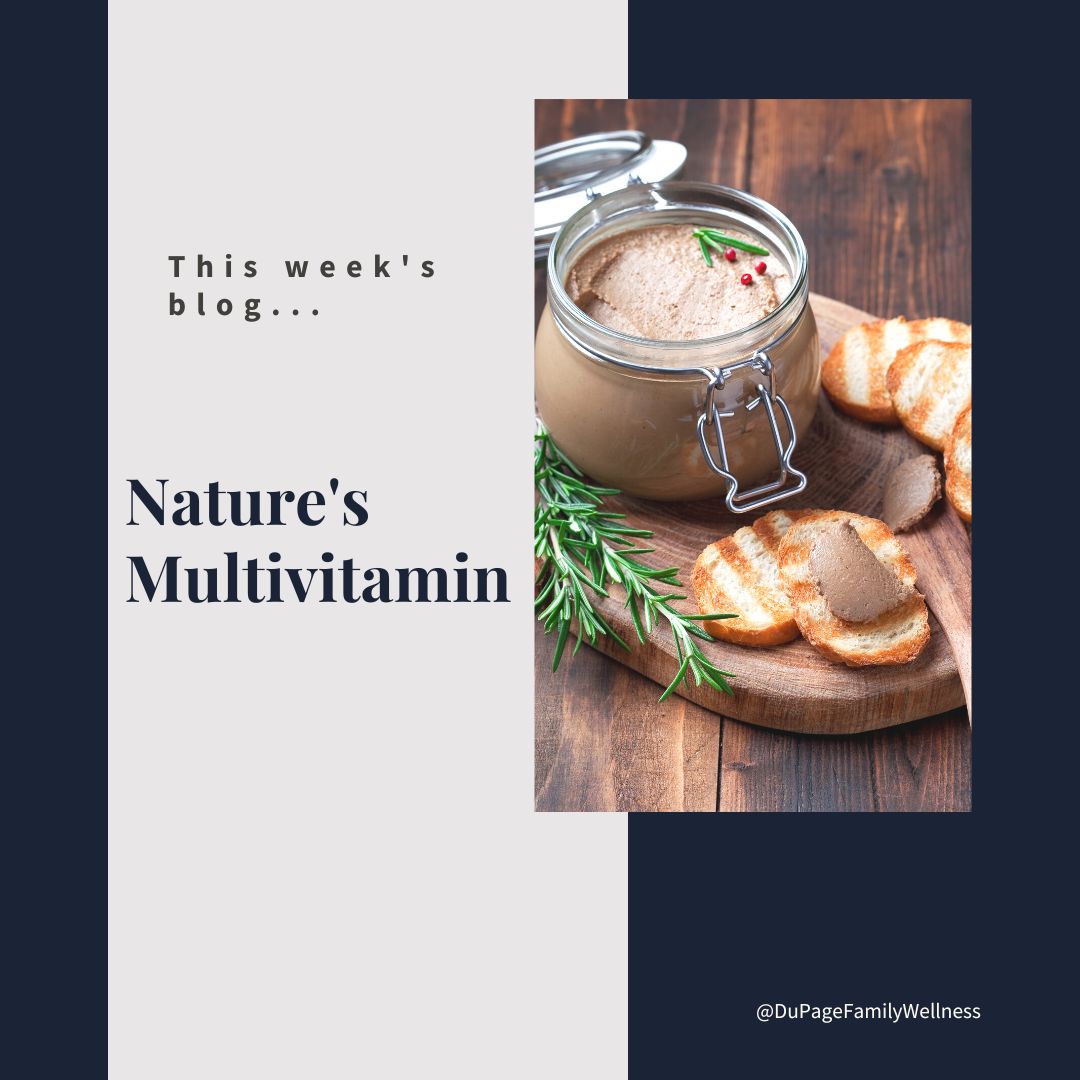
Did you grow up on Captain Crunch and Lucky Charms? If so, you may have changed this if you’ve decided to eat healthy. Now you may opt for Special K, Shredded Wheat, Raisin Bran or oatmeal, but what if I told you that those options are not that much healthier than the sugar cereals you grew up on?
If you read the ingredient list on any cereal box, it will likely include some form of added sugar, along with 20-30 ingredients. Many of these ingredients you may not be able to pronounce and they would not be considered “real food.” This is true of most “healthy” cereals as well.
Cereal and oatmeal primarily contain carbohydrates. It converts to glucose (sugar), giving you a surge of energy that only lasts for a couple of hours. To avoid the crash that follows this quick energy, breakfast should include long-burning fuel sources provided by proteins and fats.
Let’s look at some great options that will keep you full till lunch!
Leftovers
Leftovers from the night before can make a great breakfast. It’s easy and fast on a busy morning and hopefully contains lots of nutrition. While it may be unconventional, having leftovers is a good way to start the day.
Banana Pancakes
Two-ingredient Banana and Egg Pancakes are a great way to start the day. They are a delicious choice made from natural real-food ingredients and contain a protein to balance the fruit. You can make them ahead of time and store them for a couple of days in the refrigerator. Serve them with butter to add a healthy fat, and top with blueberries or strawberries for an extra bit of taste.
Breakfast Cups
Ham and Egg Breakfast Cups are a favorite simple delicious breakfast idea that can be made ahead of time. Once you are familiar with this recipe, you can play with it adding different meats and veggies to your liking.
Smoothies
Breakfast Smoothies can be made quickly and easily eaten on the go. They can provide a healthy mix of real food ingredients. You can add a scoop of protein powder and it will last you even longer.
Read more ...
 You know that eating veggies is important for your overall health! But sometimes it’s a hassle to run to the grocery store, clean the produce, and prepare a salad. It can get even more complicated if you are concerned about the pesticides used on conventional produce.
You know that eating veggies is important for your overall health! But sometimes it’s a hassle to run to the grocery store, clean the produce, and prepare a salad. It can get even more complicated if you are concerned about the pesticides used on conventional produce.
In the summer it can be fun to keep a garden for fresh lettuce, herbs, kale, etc. You may also be able to find a trusted source at a local farmers’ market. But in the winter, it can be hard to figure out.
The tower garden has been the solution for me. It is a great product that makes it possible to grow your own produce year-round. I want to share information about the tower garden, but I also want to share some of the great produce grown in my office with you!
What is a Tower Garden
A tower garden is a vertical garden that uses less soil and water than a regular garden. Mine has LED lights that surround evenly distributing light at all levels. Multiple types of plants are able to grow at the same time.
There are many brands of tower gardens to choose from. You can even build a tower garden on your own. I purchased mine from Juice Plus.
Benefits of the Tower Garden
In addition to the easy nutritious vegetables it provides, a tower garden has many other benefits.
- The aeroponic approach to gardening has been shown to produce an average of 30% greater yields and 3x faster growth times than other methods.
- A tower garden takes up to 90% less space than your typical garden.
- It gives you the benefits of homegrown produce without all the work of maintaining an outdoor garden.
- Those who are environmentally conscious will like the fact that greens grown by your tower garden means no transport to the grocery store and less trips for you, resulting in a lower carbon footprint.
- It also uses much less water than conventional farming.
- Nutrition and water are 100% recyclable in this closed system.
- No need for insecticides or pesticides.
Read more ...
 Many people use the new year as a time to focus on eating healthy. It is a great goal, but all the nutrition advice can make it difficult to know where to start. One health “expert” says one thing, while another says the exact opposite. So, who do you believe and where do you start?
Many people use the new year as a time to focus on eating healthy. It is a great goal, but all the nutrition advice can make it difficult to know where to start. One health “expert” says one thing, while another says the exact opposite. So, who do you believe and where do you start?
As I’ve researched nutrition and studied functional medicine, I’ve drawn my own conclusions based on research. Some of it went in direct conflict with what I had always been taught. But as a doctor, I need to follow the research, not just someone’s opinion.
With that in mind, I think the one change that can make a huge difference in your health is to drastically reduce the polyunsaturated fatty acids (PUFAs) in your diet. This may come as a surprise to some of you, but there is a compelling case for this that can’t be ignored.
Let’s look at these oils, what they do in the body, and how to avoid them.
What are PUFA’s
Polyunsaturated fatty acids (PUFAs) are unsaturated fats made up of a chain of hydrogen and carbon. This type of unsaturated fat has two or more double bonds in this chain. This structure is less stable than other oils and can create many problems.
PUFAs are vulnerable to light, heat, and even oxygen. These vulnerabilities can lead to damage that leads to oxidization. When we have oxidized fats, we are ingesting free radicals which leads to inflammation. PUFAs are high in Omega-6 which also leads to inflammation.
Inflammation is extremely damaging to the body, contributing to nearly every chronic health condition you can think of (diabetes, metabolic syndrome, autoimmune disease, cardiovascular disease, some cancers, rheumatoid arthritis, asthma, mental health issues, cognitive decline, dementia, obesity, etc.).
Which Oils to Avoid
When we talk about oils, all of them contain a blend of various types of fatty acids. They have a varying percentage of mono and polyunsaturated fatty acids (PUFAs), saturated fatty acids, and sometimes even trans fatty acids. I am actually totally fine with saturated fatty acids for most people. My recommendation is to remove the oils that tend to have the highest percentage of PUFAs and of course trans fatty acids.
Take a look at the oils below (PUFAs are in blue). Think about where you can make some changes by switching a higher-level PUFA for a lower one. It is especially important to consider this when cooking.
Could you cook with butter or coconut oil instead of vegetable (soy) oil? Would lard be an acceptable exchange for seed or nut oils? Just changing a little thing can make a big difference.
Read more ...
 You may be familiar with vitamin D, zinc, and vitamin C, but what about magnesium? As important as magnesium is, it doesn't get the recognition it deserves. Magnesium is the fourth most abundant mineral in the body (1) and is needed for more than 300 biochemical reactions in the body (2).
You may be familiar with vitamin D, zinc, and vitamin C, but what about magnesium? As important as magnesium is, it doesn't get the recognition it deserves. Magnesium is the fourth most abundant mineral in the body (1) and is needed for more than 300 biochemical reactions in the body (2).
It does so much in the body and not having enough can lead to all sorts of problems. However, since our soil is so depleted our food is depleted too. Because it is difficult to get through our diet, it is important to be intentional about getting enough magnesium.
Let’s look at the important function it has in the body and learn the best way to see if you are getting enough.
Why Magnesium is Important
Magnesium is important for many systems and functions in your body including:
- nervous system regulation
- muscle function
- energy production
- blood glucose levels (3)
- blood pressure (4)
- inflammation (5)
- brain function - depression and anxiety (6, 7)
- sleep (8, 9)
- heart health
- protein formation
- immune system function
- heart health (10)
- creating and repairing DNA and RNA
It is also beneficial in treating preeclampsia, migraine, depression, coronary artery disease, and asthma (11).
Do You Have Enough
In spite of how important this mineral is 50% of U.S. adults get less than the recommended daily allowance (12). Many of us in the functional medicine world believe that people generally need much more than the RDA daily amount.
In fact, I find that many patients do well working up to taking 5x’s their body weight in mg of magnesium each day (so a 150 lb. person would work up to supplementing with 750 mg of magnesium). Remember that magnesium is a powerful mineral and building up too fast can cause unwanted side effects.
Read more ...
 Are you wanting to create a Thanksgiving menu with all real, unprocessed, nourishing food but wonder if it will taste good? It is absolutely possible to make a great meal using healthy whole foods.
Are you wanting to create a Thanksgiving menu with all real, unprocessed, nourishing food but wonder if it will taste good? It is absolutely possible to make a great meal using healthy whole foods.
If you are unsure how to create your menu, here are several variations of the typical Thanksgiving fare that include only unprocessed real food ingredients!
If you aren't quite ready to switch all your recipes over that's okay, start with one or two. I think once you see how tasty these recipes are, you will be inspired to try some more in the following years.
You may be surprised that when you use these recipes you actually feel good after feasting, instead of the standard post thanksgiving lethargy. Enjoy!
The Bird:
Easy Roasted Turkey with Sage Butter
Butterflied Turkey Recipe (with tutorial)
Stuffing:
Sausage, Apple and Cranberry Stuffing
Paleo Comfort Foods - Stuffing
Green Bean Casserole:
Paleo Green Bean Casserole
Sweet Potato Casserole:
Sweet Potato Casserole
Roasted Garlic and Butternut Squash Mash
Cranberries:
3 Ingredient Cranberry Sauce
Other Sides:
Roasted Brussel Sprouts with Bacon
Beautiful Brussels Sprouts (with onion and squash)
Butternut Squash Risotto
Cauliflower "Mashed Potatoes"
Desserts:
Pumpkin Bars
Pumpkin Pie
We'd love to hear about your favorite Thanksgiving recipes that use real unprocessed ingredients. Please share recipes and photos on our Facebook page. Let us know how it went for you.
This blog was originally put together by Dr. Jamie's sister Joelle Kurczodyna. She has completed her certification in Nutritional Therapy (NTP), is a mom of 3 kids, and has a wonderful homestead with 2 cows, more than 20 chickens, and grows lots of vegetables! To learn more about the awesome things she and her family are up to, follow her on Instagram at @fromscratchfarmstead.
Dr. Jamie and Joelle Kurczodyna
 Are you taking a good quality multivitamin to get all the nutrients you need? If so, you may be surprised to find out that I’m NOT a fan of multivitamins.
Are you taking a good quality multivitamin to get all the nutrients you need? If so, you may be surprised to find out that I’m NOT a fan of multivitamins.
I’m sure this isn’t what you expected to hear. It is contrary to the common belief; it is even contrary to what I used to believe.
There are some real concerns with multivitamins. Many are ineffective, but they could actually be doing more harm than good.
So, what are you supposed to do to get the nutrients that might be missing in your diet? Let’s take some time to explore this issue and find a better alternative.
Concerns with Multivitamins
Here are a few of my grievances with synthetic multivitamins.
- Nutrients in multivitamins are often in a form that our bodies can't use at all, can't use well, or don't act the same way in your body as they would in their natural form.
- Nutrients are not balanced properly so they can not work together in the synergistic way they were intended.
- Some nutrient levels are actually too high. More is not always better as this can leave our bodies with more to process and deal with unnecessarily.
- Some nutrient levels are too low, leaving the body still depleted.
Why Balance is so important
Nutrients are affected by other nutrients. Here are just a few examples:
- Supplementing with Zinc can deplete copper
- Too much Ascorbic Acid (the common supplemental form of Vitamin C) can lead our bodies to dump Copper
- Too much vitamin D supplementation can drive down our Retinol (Active Vitamin A)
- Too much Calcium supplementation can drive down Magnesium
Bottom line, if you are getting too much of a nutrient, it can change the levels of other nutrients. Nutrients work together (which is how they are also found in nutrient dense food!)
What should you take instead?
So, if taking a multivitamin is off the table, what should you do instead? Let’s look to nature because it knows how the body was designed and what it needs to thrive. Beef liver acts like nature's multi-vitamin! It is rich in SO MANY real food forms of vitamins and minerals that are easy for your body to absorb.
Read more ...



 You know that eating veggies is important for your overall health! But sometimes it’s a hassle to run to the grocery store, clean the produce, and prepare a salad. It can get even more complicated if you are concerned about the pesticides used on conventional produce.
You know that eating veggies is important for your overall health! But sometimes it’s a hassle to run to the grocery store, clean the produce, and prepare a salad. It can get even more complicated if you are concerned about the pesticides used on conventional produce.  Many people use the new year as a time to focus on eating healthy. It is a great goal, but all the nutrition advice can make it difficult to know where to start. One health “expert” says one thing, while another says the exact opposite. So, who do you believe and where do you start?
Many people use the new year as a time to focus on eating healthy. It is a great goal, but all the nutrition advice can make it difficult to know where to start. One health “expert” says one thing, while another says the exact opposite. So, who do you believe and where do you start?  You may be familiar with vitamin D, zinc, and vitamin C, but what about magnesium? As important as magnesium is, it doesn't get the recognition it deserves. Magnesium is the fourth most abundant mineral in the body (
You may be familiar with vitamin D, zinc, and vitamin C, but what about magnesium? As important as magnesium is, it doesn't get the recognition it deserves. Magnesium is the fourth most abundant mineral in the body ( Are you wanting to create a Thanksgiving menu with all real, unprocessed, nourishing food but wonder if it will taste good? It is absolutely possible to make a great meal using healthy whole foods.
Are you wanting to create a Thanksgiving menu with all real, unprocessed, nourishing food but wonder if it will taste good? It is absolutely possible to make a great meal using healthy whole foods.  Are you taking a good quality multivitamin to get all the nutrients you need? If so, you may be surprised to find out that I’m NOT a fan of multivitamins.
Are you taking a good quality multivitamin to get all the nutrients you need? If so, you may be surprised to find out that I’m NOT a fan of multivitamins.